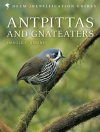This book aims at both academics and professionals in the field of forest-people interfaces. It takes the reader on a journey through four major themes that have emerged since the initiation of ’social forestry‘ in the 1970s: non-timber forest products and agroforestry; community-based natural resource management; biocultural diversity; and forest governance. In so doing, the books offers a comprehensive and current review on social issues related to forests that other, more specialized publications, lack. It is also theory-rich, offering both mainstream and critical perspectives, and presents up-to-date empirical materials. Reviewing these four major research themes, the main conclusion of the book is that naïve optimism associated with forest-people interfaces should be tempered. The chapters show that economic development, political empowerment and environmental aims are not easily integrated. Hence local landscapes and communities are not as ‚makeable‘ as is often assumed. Events that take place on other scales might intervene; local communities might not implement policies locally; and governance practices might empower governments more than communities. This all shows that we should go beyond community-based ideas and ideals, and look at practices on the ground.
Inhaltsverzeichnis
Preface.- 1. Forest-people interfaces: from local creativity to global concerns.- 1.1. Introduction.- 1.2. Non-timber forest products and agroforestry.- 1.3. Community-based natural resource management.- 1.4. Biocultural diversity.- 1.5. Forest governance.- 1.6. Conclusion.- References.- Part I. Non-timber forest products and agroforestry.- 2. Non-timber forest product extraction as a productive bricolage Process.- Abstract.- 2.1. Introduction.- 2.2. Non-timber forest products: general characteristics and their role in peoples’ livelihoods.- 2.3. NTFP production as productive bricolage.- 2.4. The need to consider levels of scale: adding a political ecological perspective.- 2.5. Conclusion.- Acknowledgements.- References.- 3. Gum and resin-producing species in the drylands of Ethiopia: productive bricolage footprints on the landscape.- Abstract.- 3.1. Introduction.- 3.2. Dry forests in Ethiopia.- 3.3. Gum and resin in the dryland livelihoods of Ethiopia: livelihood strategies and dynamics.- 3.4. Status of the woodlands dominated by Boswellia species in the drylands of Ethiopia.- 3.5. Understanding the management status of gum and resin-producing woodlands.- 3.6. Discussion: productive bricolage and landscape management.- 3.7. Conclusion.- References.- 4. Land-use dynamics in enset-based agroforestry homegardens in Ethiopia.- Abstract.- 4.1. Introduction.- 4.2. Structure and composition of enset-coffee agroforestry homegardens.- 4.3. The central role of enset in homegardens and livelihoods.- 4.4. Dynamics in enset area composition.- 4.5. Implications of the dynamics in enset-coffee agroforestry homegardens for agricultural sustainability.- 4.6. Conclusions.- References.- 5. Woodfuel and producers’ livelihoods in the Congo Basin.- Abstract.- 5.1. Introduction.- 5.2. Theoretical outlook.- 5.3.Methodology.- 5.4. Results.- 5.5. Discussion.- 5.6. Conclusion.- Acknowledgements.- References.- Part II. Community-based natural resource management.- 6. Discourses of community forestry.- Abstract.- 6.1. Introduction.- 6.2. Environmental discourses.- 6.3. Discourses of community forestry.- 6.4. Assessing the CF discourse.- 6.5. Community forestry discourses: quo vadis?.- 6.6. Conclusions.- References.- 7. Conservancies in Namibia: a discourse in action.- Abstract.- 7.1. Introduction.- 7.2. The empirical setting.- 7.3. The theoretical setting: analysing conservancies.- 7.4. The community question: conservancy dynamics.- 7.5. New regimes of power?.- 7.6. Conclusions.- References.- 8. REDD+: what’s in it for community forest management?.- Abstract.- 8.1. Introduction.- 8.2. The nature of international REDD+ policy.- 8.3. The prominence of CFM in national REDD+ plans.- 8.4. The niche of CFM within REDD+.- 8.5. The commercial value of the carbon services delivered by CFM.- 8.6. Organising payments for communities.- 8.7. The dangers of recentralisation and the establishment of safeguards and rights.- 8.8. Regulation, markets or negotiation?.- References.- 9. Learning from the actors: the rise and demise of a CBNRM initiative in Mexico.- Abstract.- 9.1. Introduction.- 9.2. Constructing the organization.- 9.3. Putting the CBNRM initiative into practice.- 9.4. Demise.- 9.5. Conclusion.- References.- Part III. Biocultural diversity.- 10. Perceptions and values of local landscapes: implications for the conservation of biocultural diversity and intangible heritage.- Abstract.- 10.1. Introduction.- 10.2. Methods.- 10.3. Results.- 10.4. Discussion.- 10.5. Conclusion and implications.- Acknowledgments.- References.- 11. Biocultural diversity in the Netherlands: from ecologically noble savages towards bioculturalcreatives.- Abstract.- 11.1. Introduction.- 11.2. The cultural roots of biodiversity conservation.- 11.3. From ‘ecologically nobles savages’ to ‘biocultural creatives’.- 11.4. Our conceptual approach to biocultural creativity.- 11.5. How Dutch citizens interact with nature.- 11.6. Biocultural creatives.- 11.7. The future of biocultural diversity in the Netherlands.- References.- 12. ‘Diversity (still) at stake’: a farmers’ perspective on biodiversity
and conservation in Western Mexico.- Abstract.- 12.1. Introduction.- 12.2. Diving into theory.- 12.3. Research design.- 12.4. Farmers’ classification of the landscape.- 12.5. Succession management and landscape patchiness.- 12.6. The organisation of time and space.- 12.7. Transformations in resource diversity.- 12.8. Reorganisation of time and space.- 12.9. Variation in resource diversity transformations.- 12.10. Discussion and conclusion.- References.- 13. Governing biocultural diversity in mosaic landscapes.- Abstract.- 13.1. From managing biocultural diversity to governing mosaic landscapes.- 13.2. Biocultural diversity, mosaic landscapes and governance defined.- 13.3. The spatial dimension of governance: governance of place.- 13.4. Enhancing landscape governance: a learning approach.- 13.5. Landscape learning in practice.- 13.6. Conclusion.- References.- 14. The (onto)politics of classifying biocultural diversity: a tale of chaos, order and control.- Abstract.- 14.1. Introduction: biocultural diversity as an ordering device.- 14.2. Classification systems, boundaries and performativity.- 14.3. Biocultural diversity in Wiersum’s research.- 14.4. Classifications in research on biocultural diversity.- 14.5. The (onto)politics of classifying biocultural diversity.- 14.6. Performativity: the social and material implications ofclassifying
biocultural diversity.- References.- Part IV. Forest governance.- 15. Forest governance: a state of the art review.- Abstract.- 15.1. Introduction.- 15.2. Governance.- 15.3. Forest governance.- 15.4. Forest governmentality.- 15.5. Triple G.- 15.6. Conclusion.- Acknowledgement.- References.- 16. Exploring forest governance in Tanzania.- Abstract.- 16.1. Introduction.- 16.2. Background information.- 16.3. Contemporary forest governance in Tanzania.- 16.4. Impact of new forest governance on forest resources and livelihoods of local people.- 16.5. Conclusion.- References.- 17. Institutional bricolage in community forestry: an agenda for future research.- Abstract.- 17.1. Introduction.- 17.2. Institutional thinking in community-based forest management.- 17.3. Institutional bricolage.- 17.4. Key elements of bricolage.- 17.5. Practices of institutional bricolage.- 17.6. Conclusions.- References.- 18. Forest market governance: exploring a practice-based approach.- Abstract.- 18.1. Introduction.- 18.2. Setting the stage: markets from a disciplinary view.- 18.3. Towards a new approach: markets as practices.- 18.4. Implications of researching markets as practices.- 18.5. Discussion and conclusion.- References.












